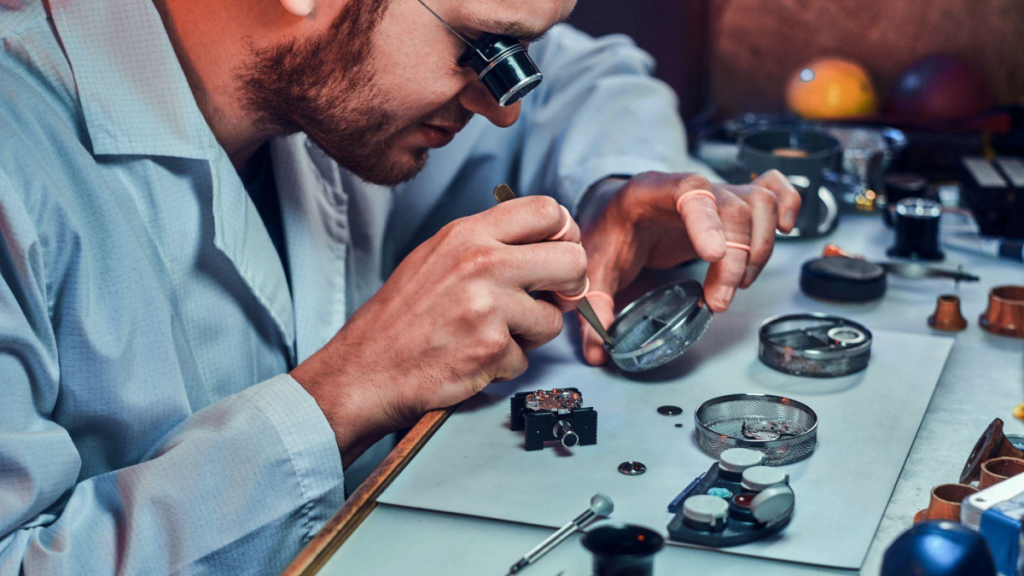Watches and clocks never cease to amaze as their inner workings remain a mystery to many. Horologists at Ralph Christian Watches delve into the various types of mechanisms that power watches. Mechanical, automatic, and quartz movements are analyzed, examining essential components’ synchrony in keeping time with precision. An intricate network of gears and springs work together to control seconds, minutes, and hours.
What are Watch Movements?
Watch movements are the inner mechanisms for the hands’ flawless progression, allowing precise time-keeping. Renowned for its craftsmanship, Ralph Christian Watches dedicates tremendous expertise to creating these miniaturized pieces, ensuring proper precision. These intricate components are essential to any watch. Pivotal parts like the escapement, balance wheel, and coiled mainspring power the movement and control timekeeping with exceptional consistency. Reputable brands prioritize the utmost care in combining these pieces, highlighting vital craftsmanship to achieve quality and reliability.
Types of Watch Movements
Mechanical
At watchmaking’s core lies mechanical mechanisms composed of balance wheels, escapements, and interlocked gears working together to calculate time with incredible accuracy. In high-end pieces, the tourbillon stands out as a fascinating process aimed at counteracting gravity’s effects on the movement to amplify precision. Artisans pay close attention to assembling these microscopic components, ensuring seamless integration of each calibrated part.
Quartz
Quartz watches handle timekeeping through oscillating quartz crystals, far surpassing mechanical watches in precision. Reliability and low maintenance define these watches. An electronic oscillator controls a quartz crystal’s vibrations, establishing resilient timekeeping unaffected by temperature, magnetism, or other factors.
Automatic
Self-winding automatic watches thrive on natural motion, with manual winding being unnecessary. Skeleton dials showcase the detailed gears’ technical mastery in an artistic display. Viewing these mechanical marvels through the display reveals the oscillating weight and spinning gears maintaining smooth progression in a rhythmic dance.
Components of Watch Movements
Vital components, including the oscillating balance wheel, escapement, and power source, ensure that watches will keep their time with minimal errors.
Balance Wheel
The metronome within a watch ensures accuracy and precision in its regular beats, often multiple times per second, acting as the watch’s pulse. Energy is released from the mainspring with each motion, ensuring the watch’s continuous precision. The metronome’s motions are sometimes carefully adjusted, adding slight loads or tweaks to refine its tempo. As the watch’s reliable pulse, the metronome impacts every aspect of its operation, from the seamless movement of the second hand in smooth increments to the general sturdiness and reliability of the watch.
Escapement Mechanism
The escapement mechanism in watch development transfers energy from the mainspring, ensuring the precise action of the hands and accurate timekeeping. Considered the heart of a watch, it determines the precision and reliability of the watch. By allowing the motion to continue in accurate increments with every oscillation of the pendulum, the framework controls the energy stream to keep consistent timekeeping. Without this crucial piece, the watch would run too rapidly or slowly without supervision. Characterized by its delicate engineering, including fragile pieces like pallets and motion wheels, the framework is essential in the smooth functioning of mechanical watches.
Power Source
The watch’s power source can vary between hand-wound and self-winding systems. Hand-worked requires winding by the owners, while automatic developments benefit from kinetic energy from regular arm motions. Movements controlled by hand tend to be viewed as time-honored, necessitating the wearer to physically wind the watch by twisting the knob. This winding builds potential energy in the primary spring, which then provides power to the gears and hands of the watch. This rotating rotor is connected to the spring and, through an arrangement of gears, winds the watch.
How Watch Movements Work
The power of watch developments includes a complex collaboration of gears and springs, where every part plays an essential role in maintaining time and ensuring the precision of the watch.
The Role of Gears and Springs
Within a watch, gears and springs form the foundation, with gears and springs stockpiling energy to control the motion of the hands. The complex system inside comprises various gears that turn at different speeds, each directing another hand. In the interim, the springs collect potential energy from winding and release it gradually, ensuring a consistent rhythm. The delicate cooperation between gears and springs is essential for a watch’s timekeeping. Gears control the rate, while springs ensure consistent energy to maintain precision.
Factors Affecting Watch Movement Performance
Temperature and Magnetism
Changes in temperature and exposure to magnetic fields can notably influence the accuracy and efficiency of watch mechanisms, potentially leading to discrepancies in timekeeping performance and possible harm to internal components. Temperature variances can induce the dilation or contraction of metallic components inside the watch, impacting the gear train and escapement. This can lead to deviations in precision. Similarly, magnetic fields can interfere with proper functioning, resulting in inconsistent timekeeping. Watchmakers have incorporated anti-magnetic elements and engineering innovations like inner cages or silicon balance springs to counteract these and protect the mechanism from disruptions.
Wear and Tear
As time goes on, the inner workings of watches will gradually break down with use, possibly compromising functionality and lifespan. This manifests in various ways, including declining accuracy, compressing power reserves, or mechanical failure. Committing to scheduled servicing and professional maintenance for your watches is crucial to address these. With proactive care of components, owners can prevent prevalent issues like excessive friction buildup, lubricant breakdown, and misalignments that surface due to wear and deterioration over time. Routine servicing also allows horologists to identify potential problems early before they worsen.




